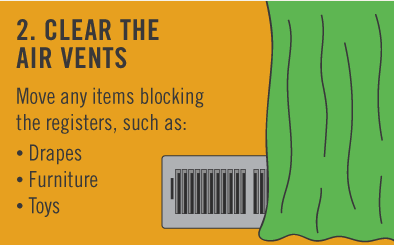The Future Of Home Home Heating - How Heat Pump Innovation Is Advancing
The Future Of Home Home Heating - How Heat Pump Innovation Is Advancing
Blog Article
Material By-Dawson Kaae
Heat pumps will certainly be a vital innovation for decarbonising heating. In a situation regular with governments' introduced energy and climate dedications, their worldwide ability doubles by 2030, while their share in home heating rises to one-quarter.
They work best in well-insulated homes and rely upon power, which can be supplied from an eco-friendly power grid. Technical breakthroughs are making them extra effective, smarter and less costly.
Fuel Cells
Heatpump utilize a compressor, cooling agent, coils and followers to relocate the air and warm in homes and home appliances. They can be powered by solar energy or electrical energy from the grid. They have been getting popularity as a result of their inexpensive, quiet procedure and the capacity to produce power during peak power need.
Some business, like IdaTech and BG MicroGen, are working with gas cells for home heating. These microgenerators can change a gas central heating boiler and generate some of a home's electrical needs with a link to the electrical energy grid for the remainder.
But there are reasons to be cynical of using hydrogen for home heating, Rosenow states. It would certainly be pricey and ineffective contrasted to other innovations, and it would contribute to carbon discharges.
Smart and Connected Technologies
Smart home modern technology allows property owners to attach and regulate their gadgets remotely with using smart device applications. For instance, clever thermostats can discover your heating choices and immediately adjust to maximize energy intake. Smart lights systems can be controlled with voice commands and automatically turn off lights when you leave the room, lowering energy waste. And wise plugs can keep an eye on and manage your electric usage, allowing you to determine and limit energy-hungry devices.
The tech-savvy household shown in Carina's meeting is an excellent image of just how owners reconfigure room heating practices in the light of new smart home technologies. They rely upon the gadgets' automated attributes to execute day-to-day changes and concern them as a practical methods of conducting their heating practices. Therefore, they see no reason to adjust their methods even more in order to enable flexibility in their home energy demand, and interventions focusing on doing so may face resistance from these houses.
Power
Since heating up homes make up 13% of US exhausts, a switch to cleaner alternatives can make a big difference. Yet the innovation deals with difficulties: It's costly and needs comprehensive home restorations. And it's not constantly compatible with renewable resource sources, such as solar and wind.
Until recently, electric heatpump were also expensive to compete with gas designs in many markets. Yet new developments in design and products are making them more economical. And better cold climate performance is allowing them to function well also in subzero temperatures.
The next step in decarbonising home heating might be using warm networks, which attract warmth from a central resource, such as a nearby river or sea inlet, and disperse it to a network of homes or structures. That would decrease carbon exhausts and permit houses to capitalize on renewable energy, such as green power from a grid provided by renewables. This option would certainly be much less pricey than switching to hydrogen, a fossil fuel that needs brand-new framework and would just lower carbon dioxide exhausts by 5 percent if paired with boosted home insulation.
Renewable resource
As electricity prices go down, we're beginning to see the exact same fad in home heating that has actually driven electrical cars and trucks into the mainstream-- but at an even faster rate. The solid environment case for impressive homes has actually been pressed even more by new research study.
Renewables account for a considerable share of modern-day heat usage, yet have been given limited policy interest internationally contrasted to other end-use industries-- and even less interest than electrical power has. In part, this mirrors a mix of consumer inertia, split incentives and, in numerous countries, subsidies for fossil fuels.
https://www.washingtonpost.com/climate-solutions/2021/07/23/passive-cooling-heat-wave/ might make the shift simpler. For example, heatpump can be made extra power efficient by replacing old R-22 refrigerants with brand-new ones that do not have the high GWPs of their predecessors. Some specialists also picture area systems that attract heat from a neighboring river or sea inlet, like a Norwegian fjord. The cozy water can then be made use of for heating and cooling in an area.